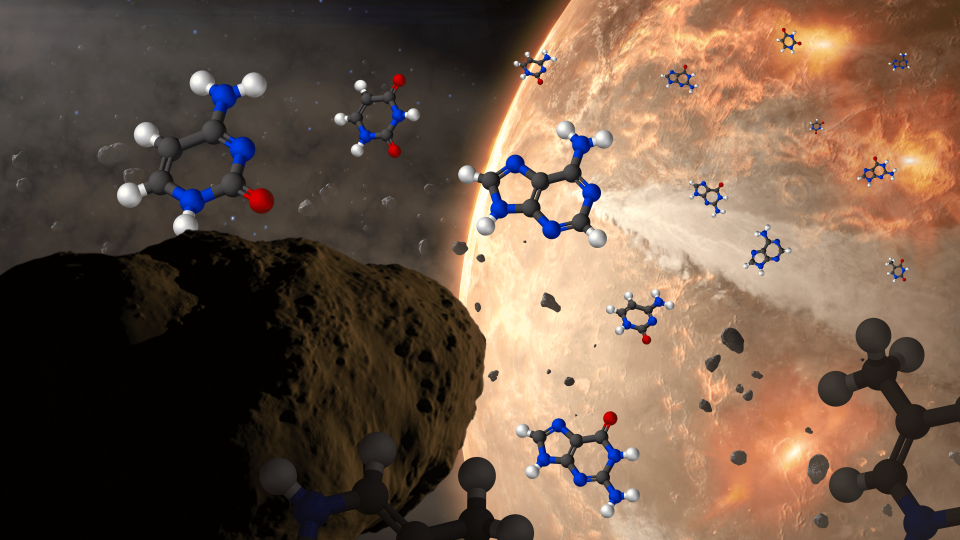Special delivery: Ancient asteroids may have delivered the building blocks of life to Earth
Asteroids crashing into the Earth could have delivered the building blocks of life to the planet, new research suggests.
Scientists have previously discovered in meteorites three of the five nucleobases, or informational units, that serve as the foundation for DNA and RNA. New findings, published this week in the peer-reviewed journal Nature Communications, report how the remaining two types were found by researchers led by Yasuhiro Oba, an associate professor at the Institute of Low Temperature Science, Hokkaido University in Japan.
DNA didn't likely form in an asteroid, researchers say, but the delivery of these genetic building blocks in asteroids could have helped lead to its development here.
“We now have evidence that the complete set of nucleobases used in life today could have been available on Earth when life emerged,” said study co-author Danny Glavin, an astrobiologist at NASA’s Goddard Space Flight Center in Greenbelt, Maryland, in the space agency's description of the research.
How did early life on Earth start? It could have been lightning, study says
What's everyone talking about? Sign up for our trending newsletter to get the latest news of the day

In earlier experiments, researchers found the nucleobases adenine, guanine, and uracil by placing asteroid grains in a "meteorite tea" to extract substances into a solution, which was then analyzed.
For the more recent experiments, cooler water and more sensitive study methods were used to extract and identify the nucleobases cytosine and thymine, while more sensitive study methods found the molecules, researchers say.
“This group has managed a technique that is more like cold brew than hot tea and is able to pull out more delicate compounds,” said Jason Dworkin, another study co-author who directs research at NASA's Astrobiology Analytical Laboratory, in NASA's research update. “I was amazed that they had seen cytosine, which is very fragile.”
Back in 1980, Carl Sagan famously said, "We are made of star stuff." And this research bolsters observations that meteorite impacts or space dust may have brought some of the building blocks of life to the Earth millions of years ago.
“This is adding more and more pieces; meteorites have been found to have sugars and bases now,” Dworkin said. “It’s exciting to see progress in the making of the fundamental molecules of biology from space.”
Follow Mike Snider on Twitter: @mikesnider.
This article originally appeared on USA TODAY: Space: Asteroids may have brought DNA foundation to Earth, study says

